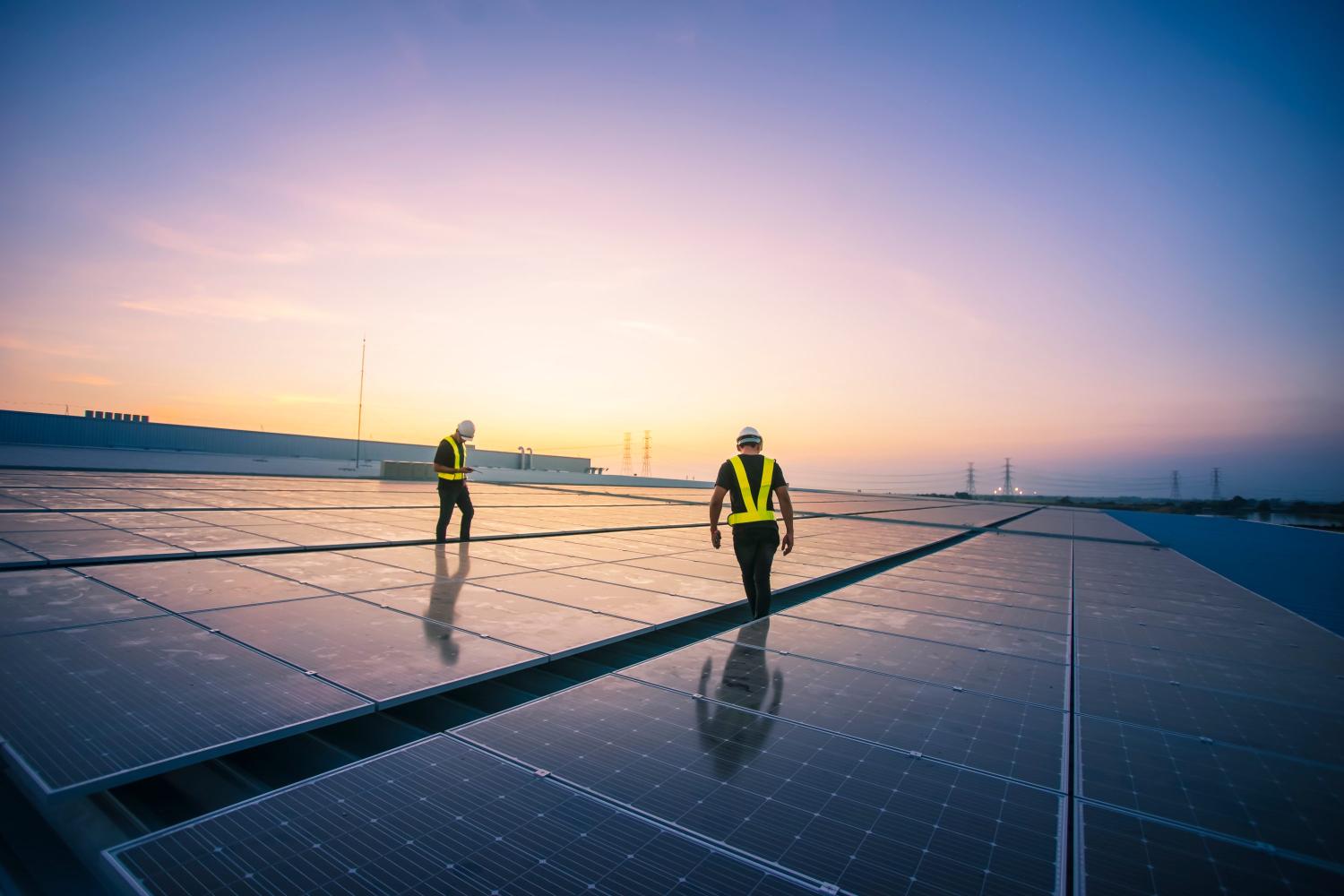The paper summarized here is part of the Fall 2021 edition of the Brookings Papers on Economic Activity (BPEA), the leading conference series and journal in economics for timely, cutting-edge research about real-world policy issues. The conference draft of the paper was presented on September 9, 2021 at the Fall 2021 BPEA conference. The final version was published in the Fall 2021 edition by Brookings Institution Press on June 7, 2022. The published paper, discussion comments and general discussion documentation can be accessed on the left side of this page under “Downloads”. Data and programs can be retrieved here. Read all papers published in this edition here.
The green investments in Senate-passed, bipartisan infrastructure legislation could, over several years, help manual laborers whose jobs are at risk as the world transitions away from fossil fuels, suggests a paper discussed at the Brookings Papers on Economic Activity (BPEA) conference on September 9.
The authors—David Popp and Ziqiao Chen of Syracuse University, Francesco Vona of OFCE Sciences-Po, and Giovanni Marin of the University of Urbino Carlo Bo—derived implications for the bipartisan legislation, still pending in the House, after examining the long-term impact of the $62 billion in green investments in the Obama administration’s 2009 American Recovery and Reinvestment Act.
By 2017, the green investments in the 2009 act—in addition to benefiting the environment—had created 640,000 jobs per year (mostly in manual labor work), or slightly more than 10 jobs for every $1 million invested, they find in The employment impact of a green fiscal push: Evidence from the American Recovery and Reinvestment Act.
The authors found that job creation was much stronger, and could be estimated with more confidence, in areas where the workforce already had a high level of green skills. In the 25 percent of commuting zones with the strongest skill distribution, green job creation was twice the creation in the average commuting area. Areas with high levels of green-job skills tended to be the wealthiest, they note, “thus, using green stimuli as part of a green energy transition may exacerbate regional inequities.”
That underscores the importance of training for the new jobs. “Any green spending plan intending to create green jobs should include funds for job training to ensure a smooth transition into green jobs for displaced workers in fossil fuel and energy intensive sectors,” the authors write.
This year’s bipartisan legislation, based on the Biden administration’s larger American Jobs Plan, includes funds for green investments such as electric vehicle charging stations, modernizing the electricity grid, and improving climate resilience. But it also provides money for plugging orphan oil and gas wells and cleaning abandoned coals mines, which should benefit communities hurt economically by the transition to clean energy.
Any green spending plan intending to create green jobs should include funds for job training to ensure a smooth transition into green jobs for displaced workers in fossil fuel and energy intensive sectors.
“Communities and groups that have been in danger of losing jobs have been very vocal opponents of the green energy transition,” Popp said in an interview with The Brookings Institution. “This policy has acknowledged that these losses are real and tried to do something about that. That’s really important.”
The paper also noted that job creation from green investments in the 2009 act was slower, compared with other investments in the act. Most jobs were created from 2013 to 2017, suggesting, the authors write, that green investments are “more effective for reshaping an economy than for restarting an economy” and, thus, would not have been effective way to address economic disruptions early in the COVID-19 pandemic.
acknowledgments
David Skidmore authored the summary language for this paper.
Citations
Popp, David, Francesco Vona, Giovanni Marin, and Ziqiao Chen. 2021. “The Employment Impact of a Green Fiscal Push: Evidence from the American Recovery and Reinvestment Act.” Brookings Papers on Economic Activity, Fall. 1-49.
Chodorow-Reich, Gabriel. 2021. “Comment on ‘The Employment Impact of a Green Fiscal Push: Evidence from the American Recovery and Reinvestment Act.’” Brookings Papers on Economic Activity, Fall. 50-57.
Ramey, Valerie A. 2021. “Comment on ‘The Employment Impact of a Green Fiscal Push: Evidence from the American Recovery and Reinvestment Act.’” Brookings Papers on Economic Activity, Fall. 57-65.
Conflict of Interest Disclosure
This project was supported in part through the Smart Prosperity Institute Research Network and its Greening Growth Partnership, which is supported by a Social Sciences and Humanities Research Council of Canada Partnership Grant (no. 895-2017-1018), as well as by Environment and Climate Change Canada’s Economics and Environmental Policy Research Network (EEPRN). Other than the aforementioned, the authors did not receive financial support from any firm or person for this article or from any firm or person with a financial or political interest in this article. They are currently not an officer, director, or board member of any organization with an interest in this article.
hIstory of bpea
The Brookings Institution is committed to quality, independence, and impact.
We are supported by a diverse array of funders. In line with our values and policies, each Brookings publication represents the sole views of its author(s).









